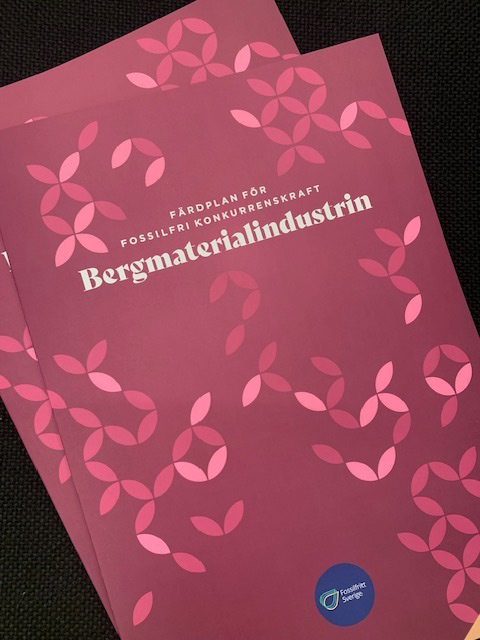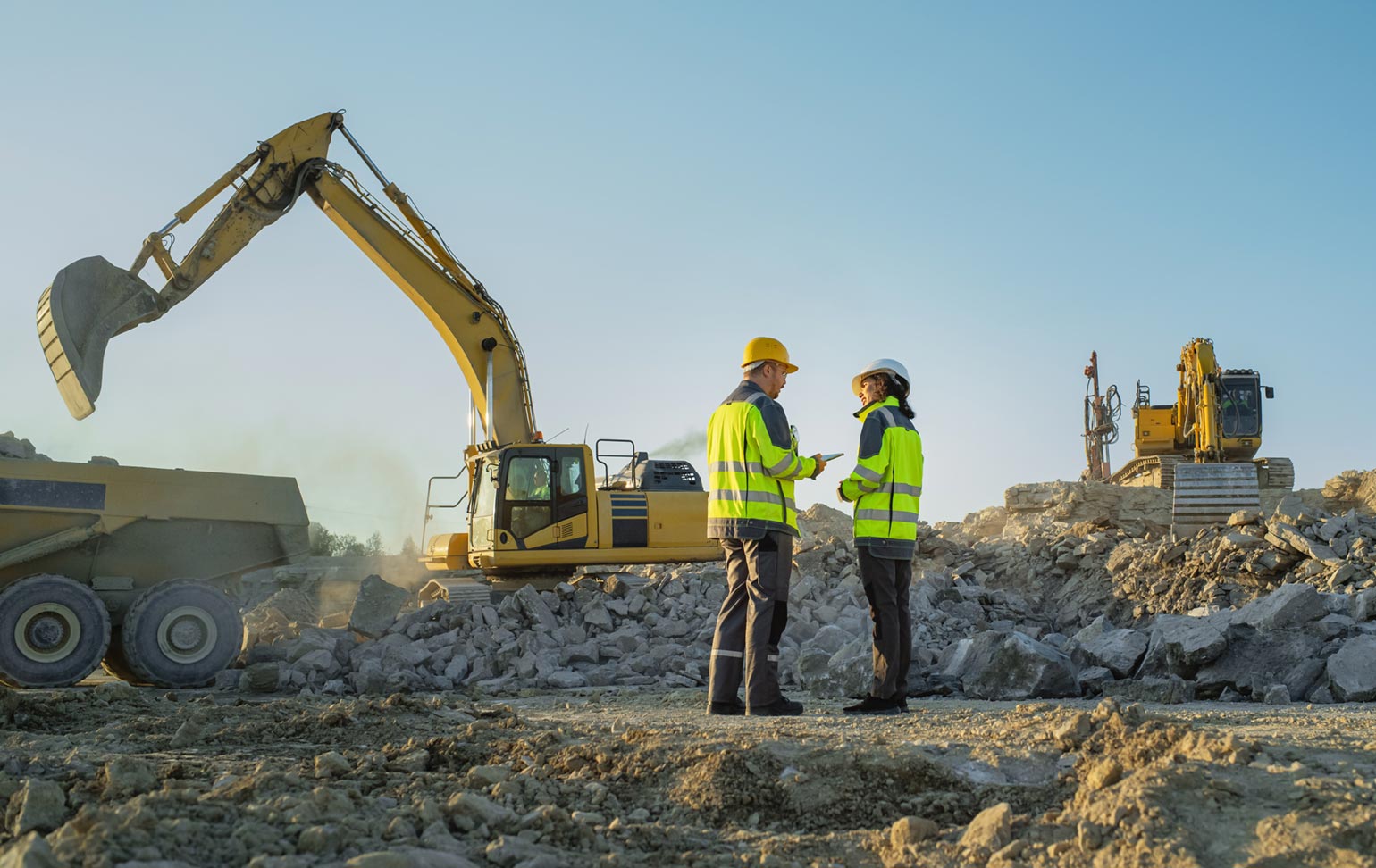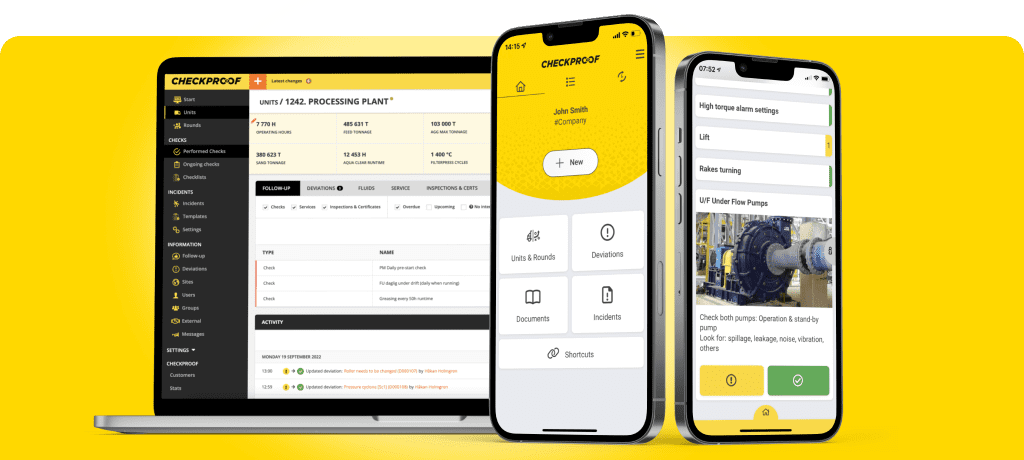Besuchen Sie uns auf der NRMCA Fertigbeton-Fachtagung, Colorado, USA, 12.-13.10.2024
The heavy industry sector is witnessing significant shifts in HSEQ management, driven by regulatory changes and technological advancements. These new approaches are reshaping best practices and fostering safer, more efficient work environments. Below, we explore the latest trends and how companies can build a culture of positive HSEQ management within their organization.
In this article we will cover:
What do we mean by HSEQ?
HSEQ stands for Health, Safety, Environment, and Quality, focusing on preventing workplace accidents, promoting employee well-being, minimizing environmental impact, and ensuring consistent product quality. A strong HSEQ framework will help companies follow legal and industry standards while improving internal operations, ensuring better procedures during audits, and most importantly, promoting staff safety.
The Latest Trends and Changes in HSEQ Practices
The Internet of Things (IoT) and AI are transforming HSEQ practices in quarries and on plants. IoT sensors can provide instant data on the conditions of heavy and hazardous equipment on sites and the conditions of plants itself. Condition-based maintenance using predictive analytics can help predict safety hazards and stop accidents before they occur. Sadly, 22% of fatalities in the industry occur because of isolation breaches. It is therefore also one of the areas that has received the most notable improvements in recent years, particularly during maintenance tasks. Isolating equipment before performing maintenance is now far more secure and reliable, relying on IoT technology with processes becoming increasingly robust. Regulatory compliance and stricter industry standards have contributed to driving the use of this technology and improving safety standards overall.
Quality control: Another trend is the growing emphasis on quality control and assurance. Companies that supply materials are increasingly required to meet ISO certification standards. This means that they must have rigorous quality processes in place, including daily material inspections. Larger companies that process vast amounts of data from various points in the production change would find it impossible to handle without a digital structure. Seamless integrations connecting your maintenance platform with your other ERP (Enterprise Resource Planning) systems not only increase the amount of accessible data but also the quality of data.
Furthermore, the ease of conducting maintenance and quality control checks—using tools like image and video capture—ensures that potential issues are caught early, maintaining a high standard of safety and performance.
Building a Culture of HSEQ Excellence
Ownership and accountability: Cultivating a strong HSEQ culture is about more than just following procedures. It’s about fostering an environment where every worker feels responsible for safety and quality. Training plays a vital role here—workers must be fully trained and understand the importance of ownership and accountability in maintaining HSEQ standards.
Challenging the status quo: A safe workplace also requires an open culture where employees feel empowered to challenge unsafe practices. For example, in organizations that celebrate long periods without accidents, there can be an unintended reluctance to report issues. Instead of promoting a culture focused solely on avoiding incidents, companies should celebrate the number of potential hazards or deviations caught. A proactive approach to incidents and case management will lead to real improvements in safety.
Sharing safety alerts across multiple sites is another way to keep employees engaged and informed. Companies learn from incidents on one site, apply them to other sites, and can address similar issues before they become critical.
Technological Advancements in HSEQ Management
The digital transformation of HSEQ management has brought about tremendous efficiencies. Platforms like CheckProof are streamlining workflows, eliminating the need for paper trails, and providing instant access to critical information. As a result, HSEQ processes that once took days or even weeks to complete are now executed in real-time, ensuring faster response times and more accurate data. The ability to capture and share information instantly helps teams make informed decisions, reducing risks and improving overall safety. The HSE Network summarizes how modern technology has helped make the workplace across industries especially for lone workers who face unique challenges. They mention a few tools, all of which contribute to preventing accidents and maintaining a safer work environment. These include:
- Training Software: Virtual Reality (VR) can provide safe, hands-on equipment training.
- IoT Technology: Machines equipped with sensors that monitor vibration, temperature or sounds can alert teams of issues prior to maintenance checks.
- Wearable Technology: These devices can track vitals and warn of unsafe conditions.
- Drones: Remote surveillance reduces worksite risks and allows workers to assess conditions within a safe distance.
- Hands-Free Communication: Enables emergency communication without phones.
- Safety Apps: With CheckProof’s app and platform you can instantly send push notifications to alert of any incident or deviations and report conditions to ensure safety compliance.
- Automated Safety Systems: Sprinklers, fire alarms, and emergency lifting systems, ensure workplace safety during emergencies.
Combining Maintenance and HSEQ Workflows with CheckProof
Integrating HSEQ and maintenance workflows has multiple benefits. Applying a holistic approach to both these areas with platforms such as CheckProof can help with HSEQ goals. Companies can enhance efficiency, improve safety, and ensure compliance across all sites. Daily checks, material inspections, and maintenance tasks can be seamlessly logged and tracked, giving teams a real-time overview of site conditions and helping to prevent incidents before they happen.
As the safety standards of the heavy industry and construction materials industries continue to evolve, companies must stay ahead of HSEQ trends to ensure the safety of their teams and the quality of their operations. Leveraging new isolation procedures, building a strong safety culture, and adopting digital tools like CheckProof are key steps toward maintaining a safer, more compliant work environment.
By focusing on building a culture where employees look out for each other and take ownership of HSEQ practices, your organization can foster long-term safety and success.
Interested in learning how you can enhance HSEQ compliance across your sites? Book a demo or download our guide on how to ensure complete HSEQ compliance today.
Want to know what CheckProof can do for you?
CheckProof's easy-to-use app makes it easier to do the right thing at the right time. Discover how you can run world-class maintenance that is both cost-effective and sustainable.

SBMI’s Climate Roadmap for a Fossil-Free Aggregate Industry by 2045

HSEQ trends in the Construction Materials and Heavy Industry

10 Tips to Reduce On-Site Costs in the Construction Materials & Heavy Industry

Inventory Management Systems for the Aggregates Industry

Managing Key Staff Absences During the Holidays

The Hillhead Report

Predictive maintenance using IoT

How your workplace health and safety policies can improve your sustainability work

Heavy Equipment Maintenance






